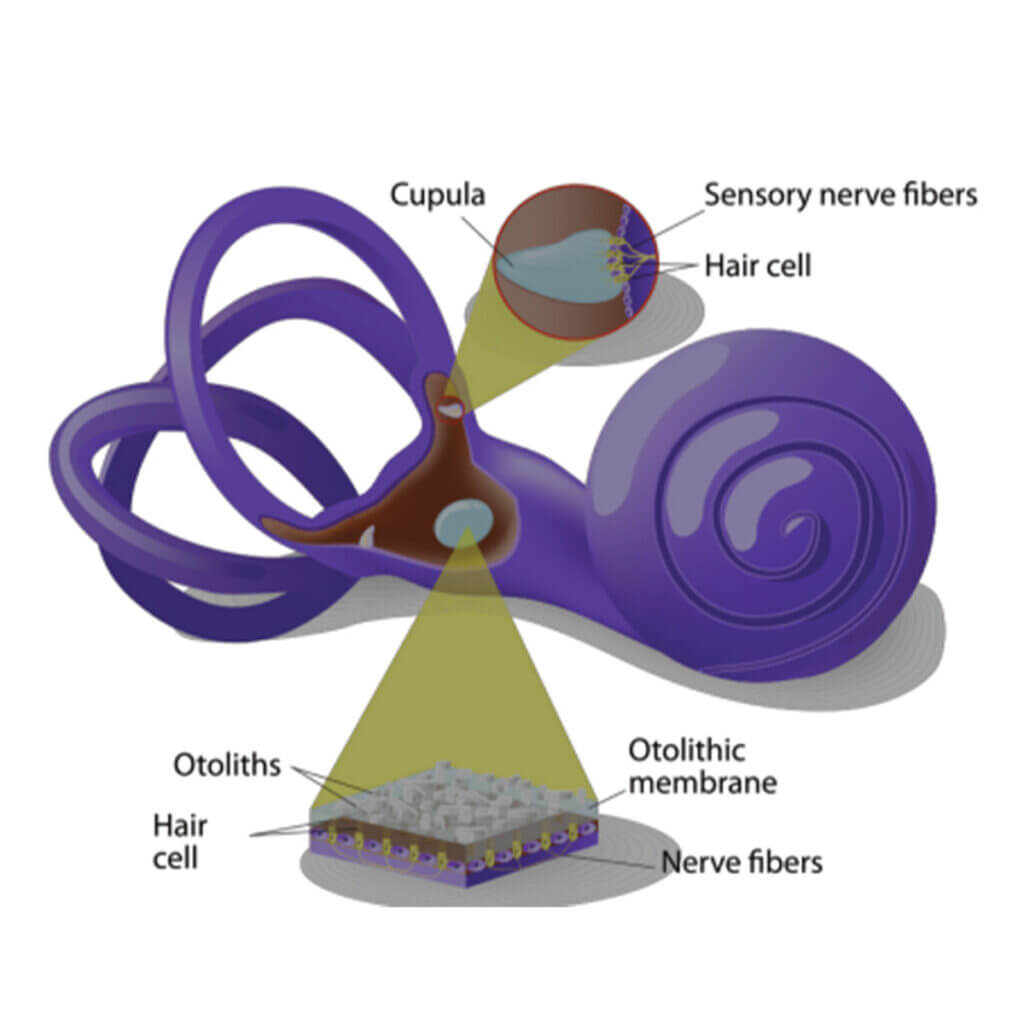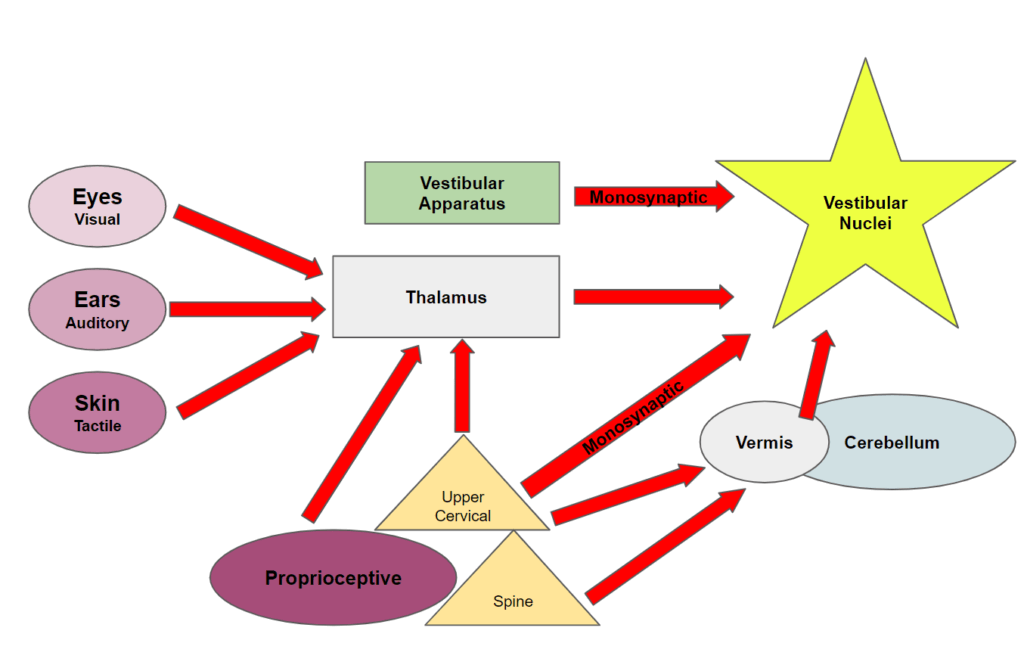
UNITE.rehab.perform
Denver's Best Sports Physical Therapy
The Vestibular System - The Most Important System in the Body That You Are Not Aware Of
The vestibular system is often thought of as the balance system of the body, if it’s even thought of at all. But, it is so much more than that. In fact, the vestibular system is the body’s sensory integration system. What that means is pretty much every sense that your body receives from the outside world runs through the vestibular system and is integrated in the brain. Here’s what the vestibular system looks like:
You have one of these behind each one of your ears, inside of your skull. Inside each one of those little tubes on the left are hair like structures called cilia. The cilia are immersed in a liquid called endolymph. These two things work together to sense the position of the head. Think of how seaweed moves with waves in the ocean – it’s kind of like that. If the head moves one way, then so does the liquid, and so does the seaweed (cilia). This seems very simple and it is. But what this small little structure means for overall health and wellness may surprise you!

Earlier, I mentioned that the vestibular system was a sensory integration system. The graphic below will give you a better idea of what I mean….

Your senses (everything that’s colored in a shade of purple on the left side of the graphic) of sight, hearing, touch, body position (proprioception) – especially the head all get routed through the vestibular system and into a structure of the brain called the Vestibular Nuclei. Think of this as a processing center. The brain receives information from the outside world (information from the senses indicated by the red arrows), figures out what it means, then sends output to the body responding accordingly. This happens at millions of bits of information per second all day long. Incredible!!
Here’s some fun facts about your vestibular system:
- – The VS is the first system to begin developing in the womb, at about 21 days -post conception.
- – It is fully developed and functioning by 5 months post conception, approximately 4 months prior to birth.
- – This means that it senses every little detail of the mother – her movement, her voice, her emotions…EVERYTHING
- – Every muscle in the body has a connection with the VS.
- – Movement is crucial for a healthy VS.
- – Stimulation of the VS plays a crucial role in the health of the nervous system.
- There is an intimate relationship between the VS and anterior and posterior muscles of the torso (your center). These muscles are the first muscles that worked together with the neck (the top of your core) to gain control of the head.
The body is designed to move. More specifically, we are designed to move our head. Where the head goes, the body goes. Since the VS is located in the head, movement of the head and body stimulates it. Where the eyes go the head goes. So it follows that moving the eyes also stimulates the VS.
Movement of the head (and body, but especially the head) nourishes the vestibular system. It keeps the fluids in the semicircular canals of the vestibular apparatus moving. This keeps it healthy. Using an analogy of water, water that is stagnant becomes lifeless and putrefied over time – no life. The cilia that live in the fluid of the canals then become stiff and brittle, unable to do their job of sensing head position relative to the horizon and the body.
Since we have established above that every muscle of the body is connected to the VS, then it follows that a lack of stimulation of the VS will lead to atrophy of the muscles of the body. This leads only to weakness and physical limitation. This lack of stimulation and the connection to muscle atrophy has actually been studied by scientists at NASA.
Dr. Joan Vernikas who is a research scientist and previous head of NASA’s Life Sciences Division observed that while in space, astronauts bodies would seemingly age faster than if they were here on earth. In fact, they aged at an alarming 10x the normal rate! This occurred because the normal pull of gravity on the body and the VS does not exist in space. Since there was no need for the body to respond to gravity and the VS wasn’t getting stimulated, the astronauts’ bodies experienced substantial physical decline. However, once they returned from space and were exposed to gravity’s pull on the VS their symptoms reversed themselves. Their youthful vigor and strength returned! What was once lost was regained.
What does this mean for us non astronauts stuck here on earth? Simple – stimulation of the VS on a regular basis through purposeful head movements is one of the main ways we can stay or regain our bodies’ own strength and vitality. Control of the head was one the first things we did as infants to begin our movement journey progressing from being stuck on the floor to rolling over, to sitting up, to crawling and eventually being able to stand and walk. Without control of the head and constant stimulation of the VS (along with its intimate relationship with all muscles of the body) life as we know it as upright, bi-pedal creatures would not exist. Strength & conditioning programs will benefit from movements to stimulate the VS in order to help athletes perform at their best when moving through space and tracking their opponents while being able to make a catch in the air.
©2020-2024 UNITE.rehab.perform LLC. All rights reserved.
UNITE.rehab.perform does not provide medical advice, diagnosis, or treatment through this website or related content. See additional information.